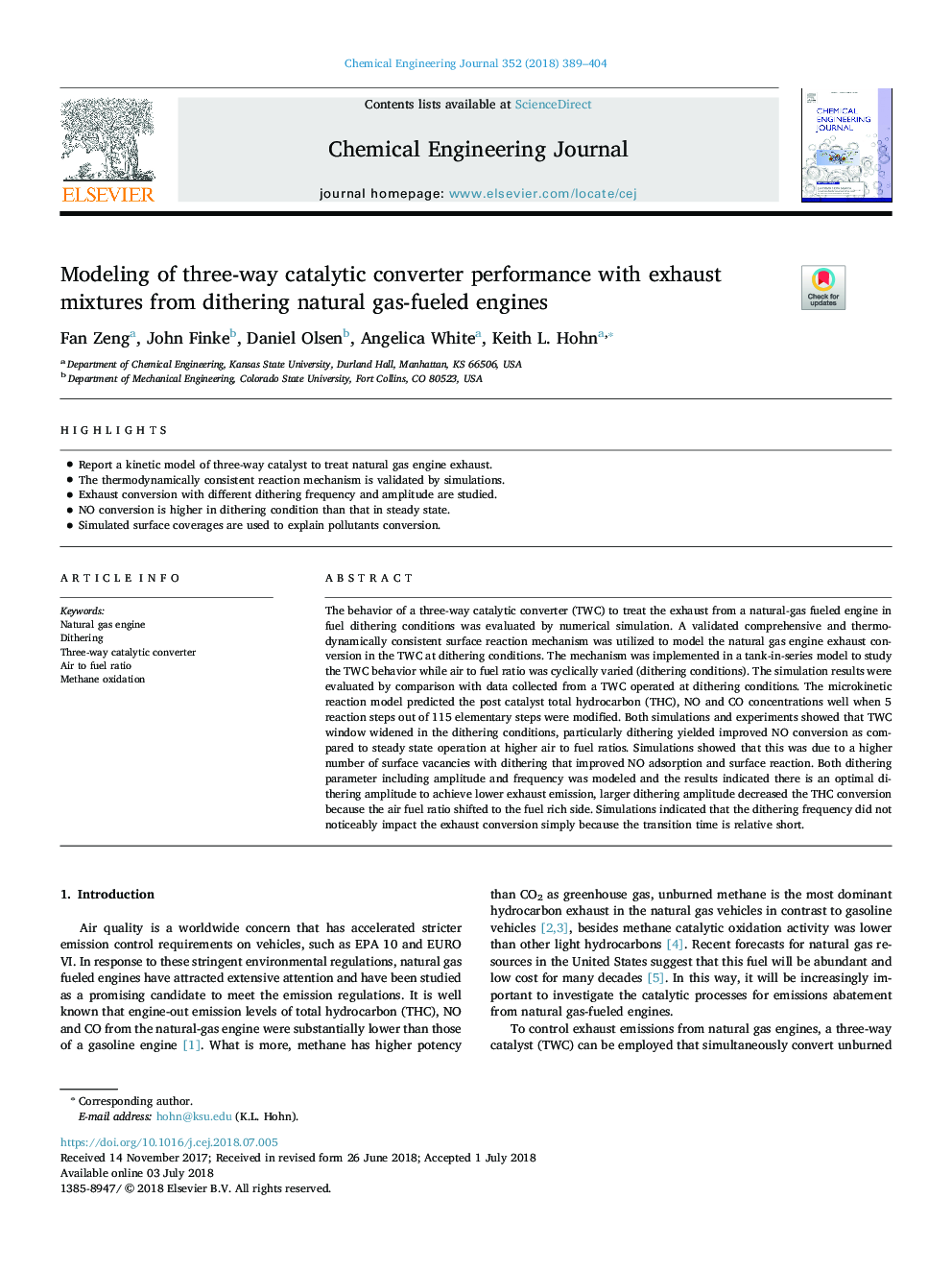| Article ID | Journal | Published Year | Pages | File Type |
|---|---|---|---|---|
| 6578128 | Chemical Engineering Journal | 2018 | 16 Pages |
Abstract
The behavior of a three-way catalytic converter (TWC) to treat the exhaust from a natural-gas fueled engine in fuel dithering conditions was evaluated by numerical simulation. A validated comprehensive and thermodynamically consistent surface reaction mechanism was utilized to model the natural gas engine exhaust conversion in the TWC at dithering conditions. The mechanism was implemented in a tank-in-series model to study the TWC behavior while air to fuel ratio was cyclically varied (dithering conditions). The simulation results were evaluated by comparison with data collected from a TWC operated at dithering conditions. The microkinetic reaction model predicted the post catalyst total hydrocarbon (THC), NO and CO concentrations well when 5 reaction steps out of 115 elementary steps were modified. Both simulations and experiments showed that TWC window widened in the dithering conditions, particularly dithering yielded improved NO conversion as compared to steady state operation at higher air to fuel ratios. Simulations showed that this was due to a higher number of surface vacancies with dithering that improved NO adsorption and surface reaction. Both dithering parameter including amplitude and frequency was modeled and the results indicated there is an optimal dithering amplitude to achieve lower exhaust emission, larger dithering amplitude decreased the THC conversion because the air fuel ratio shifted to the fuel rich side. Simulations indicated that the dithering frequency did not noticeably impact the exhaust conversion simply because the transition time is relative short.
Related Topics
Physical Sciences and Engineering
Chemical Engineering
Chemical Engineering (General)
Authors
Fan Zeng, John Finke, Daniel Olsen, Angelica White, Keith L. Hohn,
